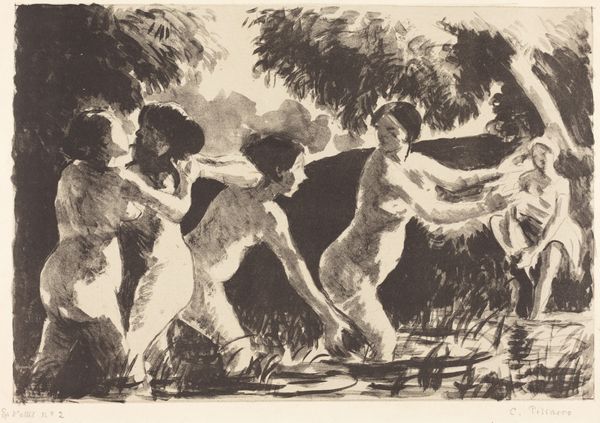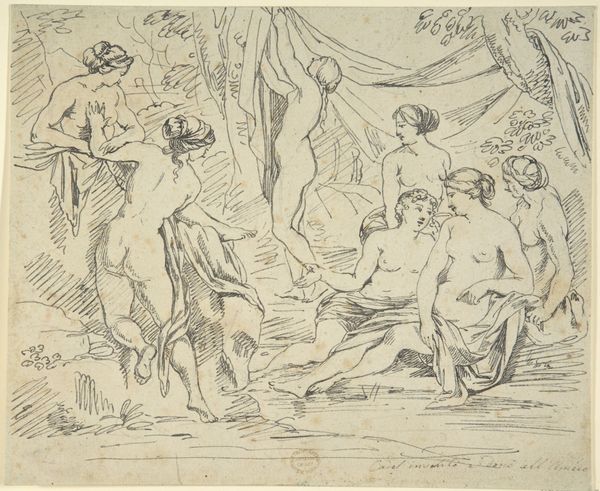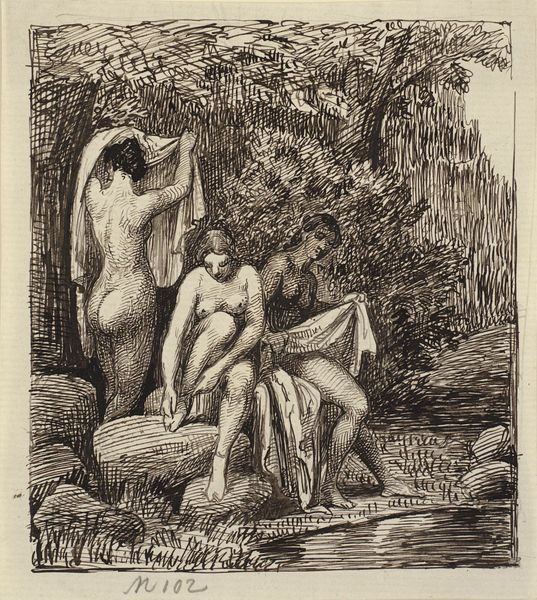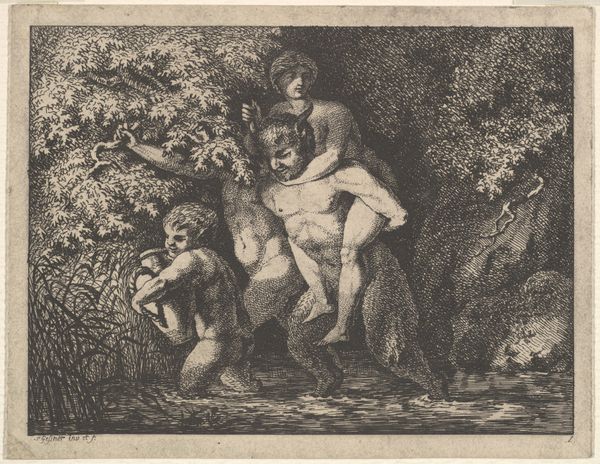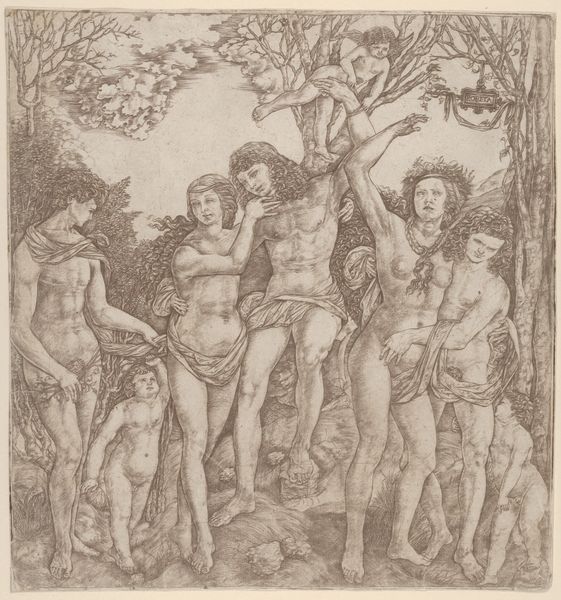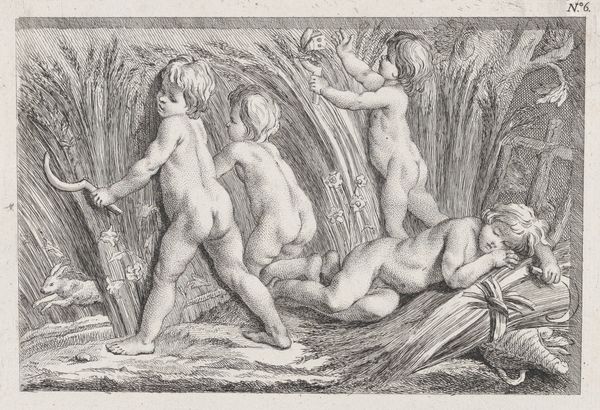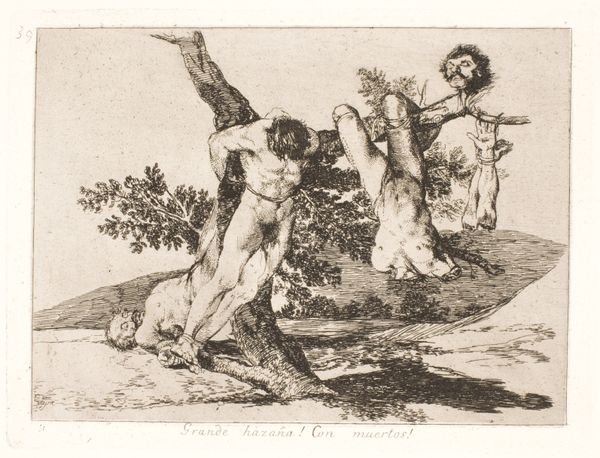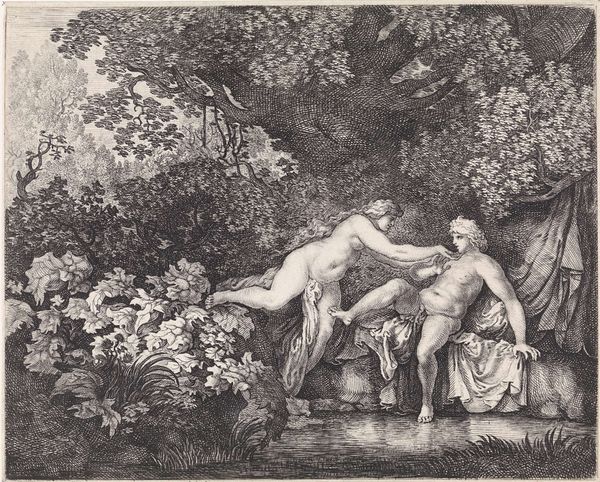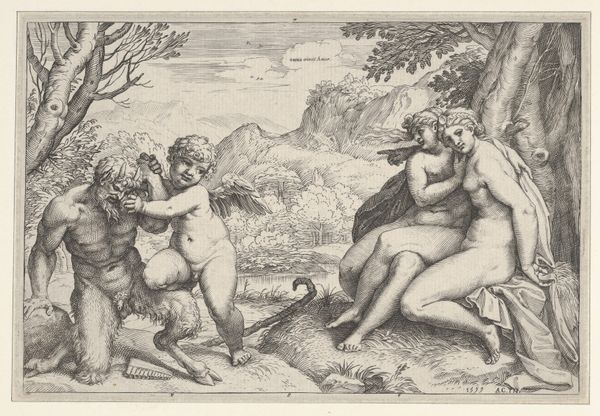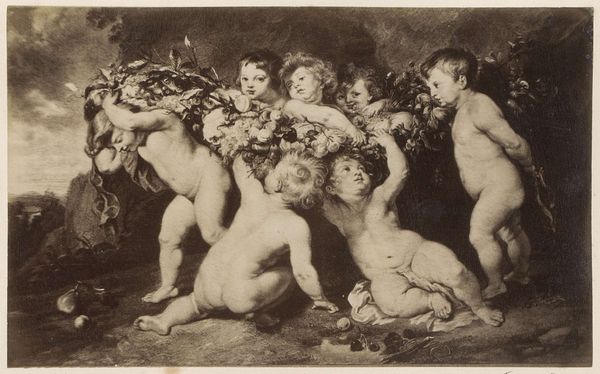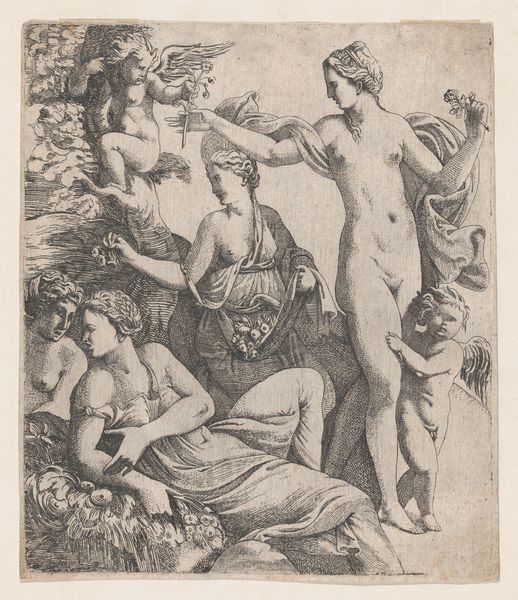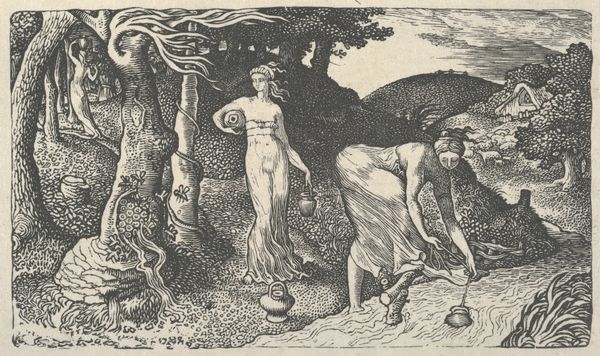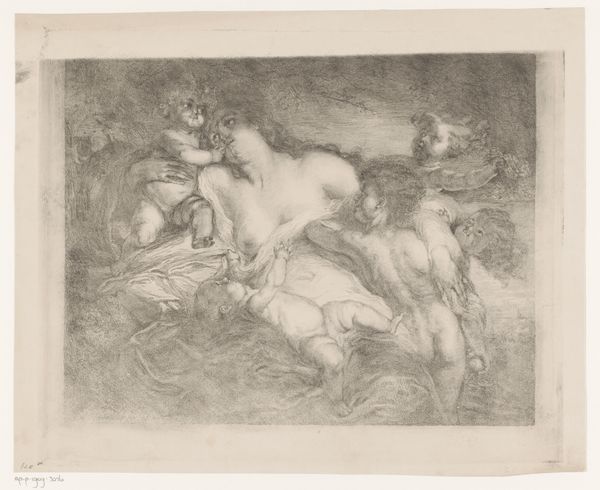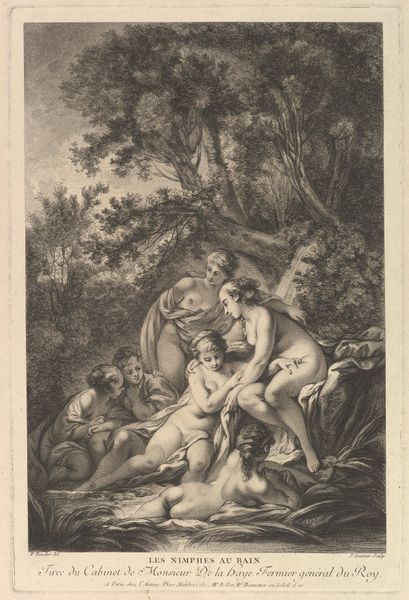
Dimensions: plate: 18.5 x 23.7 cm (7 5/16 x 9 5/16 in.) sheet: 24.1 x 29.6 cm (9 1/2 x 11 5/8 in.)
Copyright: National Gallery of Art: CC0 1.0
Editor: This is Camille Pissarro’s "Baigneuses luttant" or "Bathers Wrestling", an etching from around 1896. It depicts a group of nude women seemingly playing near the water’s edge. The hazy texture of the etching lends an air of privacy, or even secrecy, to the scene. What can you tell us about this piece? Curator: Pissarro’s choice of subject is interesting here, placing itself within a broader context of the late 19th-century fascination with scenes of leisure and the female nude. We have to consider the socio-political currents, though, to truly get a grasp on Pissarro's possible statement. While he adopts the visual language of Impressionism, he also grapples with themes of naturalism and perhaps a return to classical ideals. Think about it – what statement could Pissarro be making by representing such an earthy interpretation of the idealized bathing women, considering that the Salon preferred more delicate and graceful depictions of similar themes? Editor: I guess the earthy tones and active poses really ground these women. It definitely contrasts the sort of angelic figures you typically see. Is that what gave it its critical reception at the time? Curator: Indeed. Pissarro consistently challenges the norms. How might the artistic institutions – the salons and academies – have responded to this less-than-idealized representation of the female body in a public display? Moreover, what might viewers accustomed to highly polished academic paintings have thought about Pissarro’s rougher style and deliberately casual subject matter? Editor: That makes sense. I hadn't thought about how the public exhibitions might have dictated Pissarro's style or themes. I see now that it becomes much more complex when viewed through that context. Curator: Exactly. Thinking about art through a historical lens isn’t just about dates and artists; it’s about unpacking how cultural values and institutions actively shape our understanding and appreciation of art. Editor: This has made me see beyond the simple imagery, understanding how museums and expectations can frame how we look at art. Curator: Absolutely. Now, perhaps you'll start considering those socio-historical dimensions whenever you stand before an artwork!
Comments
No comments
Be the first to comment and join the conversation on the ultimate creative platform.
